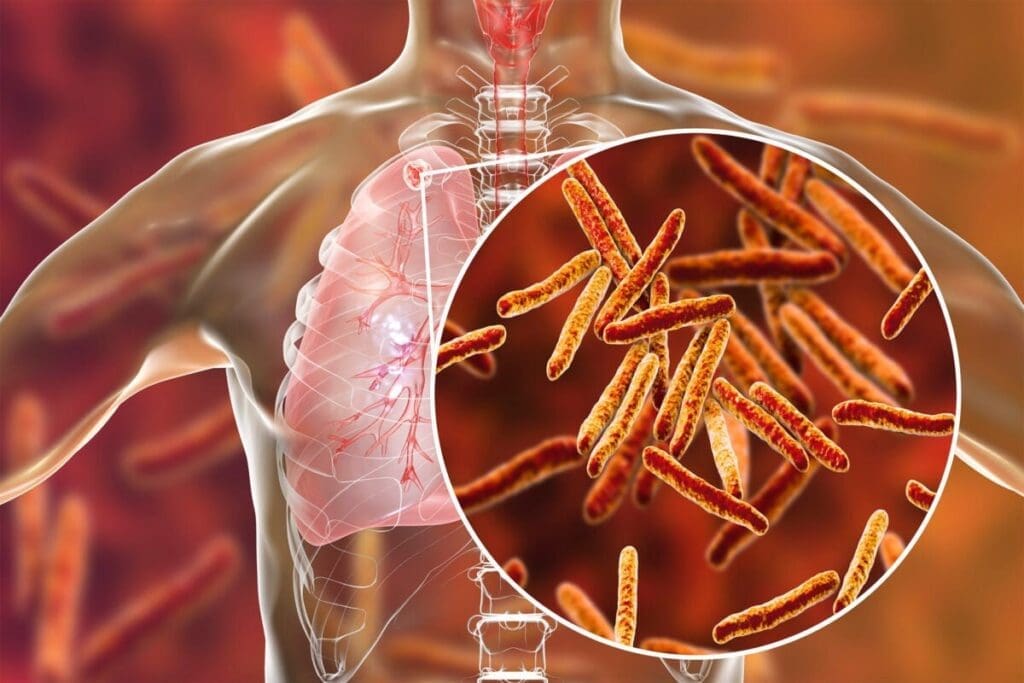
Tuberculinum
Latin name: Tuberculinum bovinum
Short name: Tub
Common name: Tuberculinum | Tubercular Nosode | Bovine Tuberculin | Tub. bovinum | Koch’s Lymph
Primary miasm: Tubercular Secondary miasm(s): Psoric, Sycotic, Syphilitic
Kingdom: Nosodes
Family: Biological Substance
- Symptomatology
- Remedy Information
- Differentiation & Application
Prepared from sterilised tuberculous abscess or lymphatic tissue from infected bovine sources. A nosode of Mycobacterium tuberculosis. First introduced by Robert Koch in the 1890s as a diagnostic and therapeutic agent in allopathic medicine.
Historically used as Koch’s lymph for testing and treating tuberculosis. Now abandoned in conventional medicine due to risk and inefficacy. In homeopathy, serves as a profound constitutional, miasmatic, and intercurrent remedy, especially for tubercular diathesis.
Not classically proved in the Hahnemannian sense. Symptoms derived from clinical use, pathogenesis, and provings by Burnett, J.H. Clarke, and later Kent, Allen, and Hering.
- Lungs: chronic catarrh, tuberculosis, asthma, cough
- Nervous system: excitability, insomnia, restlessness
- Bones and joints: degeneration, chronic pain, rheumatism
- Skin: eczema, ringworm, acne
- Glands: chronic swelling, inflammation
- Mind: dissatisfaction, destructiveness, anxiety, impulsivity
- General vitality: deep depletion and periodic collapse
- Dry air, mountains, travel, and change of climate
- Slow movement, gentle activity
- Open air, cool environments
- Discharges, especially when skin or respiratory symptoms express externally
- After sleep, sometimes with renewed energy
- Gentle stretching, though overexertion aggravates
- Closed, damp, warm rooms
- Stuffiness, urban life, and restriction
- Suppression of skin eruptions or catarrh
- Exertion, especially sudden or sustained
- Night, especially 3–4 a.m., or during changes of season
- Milk, often disagrees
- Excitement, emotional stimulation, noise, overstimulation
- Psorinum – Also chilly, offensive discharges; Psor. is more despairing and lacks Tub.’s restlessness and desire for change
- Medorrhinum – Both are restless, night-loving, thrill-seeking; Med. more impulsive and sexual, Tub. more romantic and fatigued
- Sulphur – Both have skin eruptions and neglect; Sulph. more philosophical and hot-blooded, Tub. more consumptive and dynamic
- Phosphorus – Both cravers of company and stimulation; Phos. is warm, open-hearted, Tub. more closed, restless, discontented
- Calcarea carb. – Also has tubercular tendencies; Calc. is cautious, plodding, and grounded; Tub. is driven, changeable, and sensitive
- Complementary: Phosphorus, Calc-p., Bacillinum
- Antidotes: Nux-v., Puls.
- Inimical: Baryta-c., Sil. (in some traditions)
- Follows well: Sulph., Ars., Bac., Tub. can follow many deep-acting remedies where suppression is present
- Precedes well: Sil., Calc., Sep.
Tuberculinum represents the soul in exile—a being that longs to escape boundaries, physical or spiritual. It symbolises rebellion against decay, restlessness against confinement, and a ceaseless striving toward vitality in the face of collapse. Its essence is romantic, brilliant, unstable, often alternating between fire and ash. In children, it manifests as disobedience, destructiveness, and a need for novelty. In adults, as a deep internal fatigue, masked by periods of flare and flight. This remedy is for those who, like the pathogen it’s derived from, break through boundaries, invade tissues, and then retreat, leaving wreckage behind. It seeks liberation, but burns itself in the process.
- Use as intercurrent in stalled cases, especially with history of lung disease, eczema, or recurrent infections
- Helpful in restless children, particularly when constitutional remedy fails
- Think of Tub. when a patient improves with travel, worsens in damp, and craves change
- High potencies often required (200C to 1M)
- Do not repeat too frequently; sensitive patients may aggravate
- Use when suppressed skin eruptions or catarrh preceded deep pathology
- Always look for family history of tuberculosis, even generations back
Mind
- Desire for change
- Destructive in children
- Restless, travel ameliorates
- Anxiety, about future
- Impulse to break things
Head
- Headache, bursting
- Headache, menstrual
- Sensitive scalp
Respiration / Chest
- Cough, dry, racking
- Asthma, evening
- Suffocation at night
- Wants windows open
Extremities
- Pain, shifting
- Restlessness, legs
- Growing pains
Skin
- Eczema, suppressed
- Acne, chronic
- Ringworm
- Itching, night
Fever / Generalities
- Night sweats
- Wasting, despite eating
- Symptoms alternate
- Better for dry, mountain air
J.H. Clarke – Dictionary of Practical Materia Medica: Deep clinical insight into restlessness, destructive children, and asthma
James Tyler Kent – Lectures on Homoeopathic Materia Medica: Powerful descriptions of mental restlessness and tubercular personality
William Boericke – Pocket Manual of Homoeopathic Materia Medica: Core keynotes, especially respiratory and general modalities
C. Hering – Guiding Symptoms of Our Materia Medica: Provided mental and skin indications from early clinical use
Burnett & Compton Burnett – Essays on Consumption: Original nosode use and early documentation
Modern clinical insights (Vithoulkas, Murphy): Extended its use in ADHD, allergies, and chronic skin/rheumatic disorders
